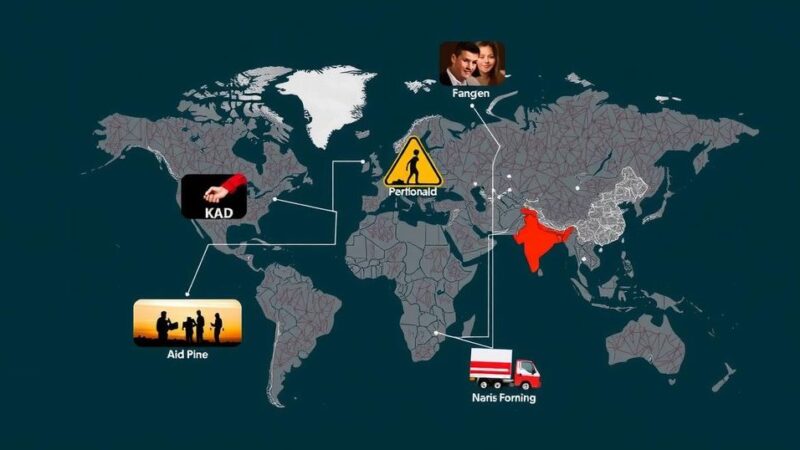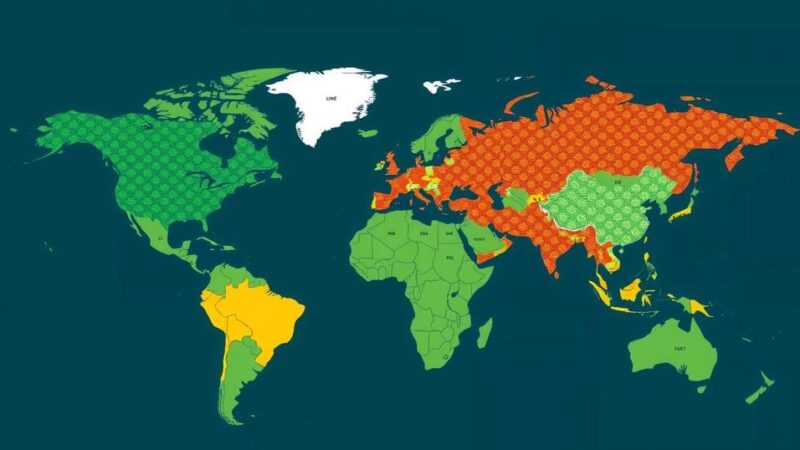Hurricane Helene has struck the Florida coast, emerging as the second-deadliest hurricane in the past 50 years, with a projected economic cost between $225 billion and $250 billion. The hurricane has led to 213 confirmed fatalities across several states, unprecedented rainfall, and significant infrastructural damage. Rescue and recovery efforts are underway, involving thousands of personnel and essential supplies to assist affected communities.
Hurricane Helene, which struck the Florida coast, has emerged as the second-deadliest hurricane to hit the United States mainland in the past 50 years. The devastation wrought by the storm has resulted in an estimated financial toll ranging between $225 billion and $250 billion, according to AccuWeather. This staggering figure befittingly reflects the extensive damage across the Southeast and the associated economic ramifications directly resulting from the hurricane. The storm has produced a catastrophic scale of infrastructure damage, widespread loss of life, business disruptions, and severe long-term economic impacts. Recent assessments reveal that Helene has surpassed 213 fatalities, making it deadlier than all but Hurricane Katrina and Hurricane Camille since 1969. This grim statistic highlights the human cost of the disaster, and reports indicate that many individuals remain unaccounted for. Before the storm subsided, Hurricane Helene unleashed an unprecedented 42 trillion gallons of rainfall upon the southeast United States, a volume that could fill Lake Tahoe. The extreme weather also contributed to the rise of rivers and led to significant flooding, evidenced by the record surge heights along the coast. Efforts to assist those affected by the storm have been vast; agencies like the North Carolina Air National Guard have delivered over 100,000 pounds of essential supplies and conducted numerous rescue operations. The social fabric of the region is under strain as roughly 4.8 million customers experienced power outages at the peak of the hurricane, with many households still facing challenges in the restoration of services. The National Hurricane Center has confirmed that the storm produced at least 33 tornadoes during its course, showcasing the hurricane’s multifaceted nature and the widespread chaos it generated across several states. As recovery and humanitarian efforts began, approximately 5,785 National Guardsmen have been actively engaged in providing assistance to the affected regions. The scale of devastation inflicted by Hurricane Helene cannot be overstated, and as communities grapple with its aftermath, the full spectrum of economic implications will continue to unfold. This natural disaster has again underscored the unpredictable and often perilous nature of hurricanes that threaten life and property in the United States.
Hurricane Helene’s recent landfall in Florida has resonated deeply due to its staggering impact, marking a dark chapter in the history of U.S. hurricanes. Its classification as the second-deadliest hurricane in five decades highlights the catastrophic risks posed by such natural disasters. Understanding Helene’s implications requires an analysis of the associated human toll, loss of infrastructure, and long-term economic consequences, including damage to vital industries and essential services. The assessment conducted by AccuWeather and other meteorological bodies emphasizes the importance of disaster preparedness and response systems in mitigating the impacts of such events in the future.
In summary, Hurricane Helene stands as a testament to nature’s formidable might, resulting in significant loss of life, extensive economic damages, and substantial challenges for the regions affected. With costs estimated between $225 billion and $250 billion, the storm’s aftermath will leave lasting scars on communities while emphasizing the urgent need for improved disaster preparedness. Recovery efforts are ongoing, with numerous agencies mobilized to aid those affected, but the road to rebuilding remains long and arduous as the true extent of the damage continues to be assessed.
Original Source: www.accuweather.com






